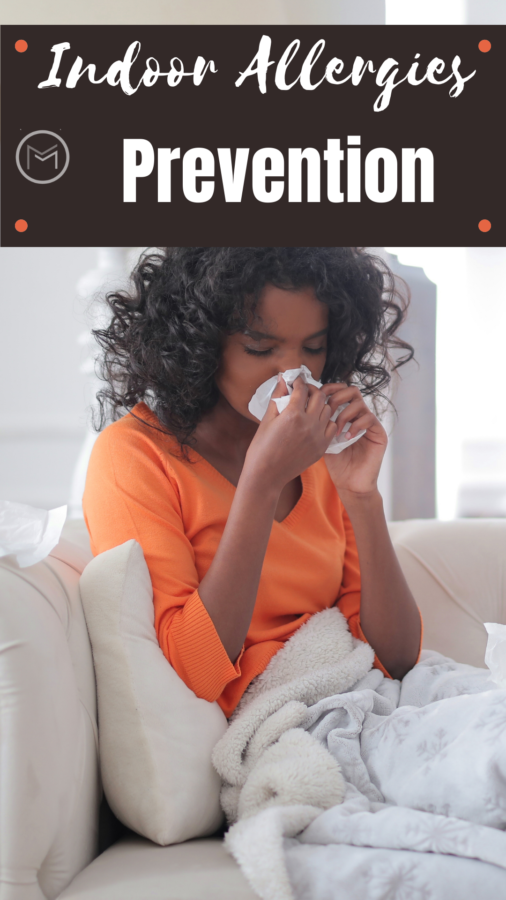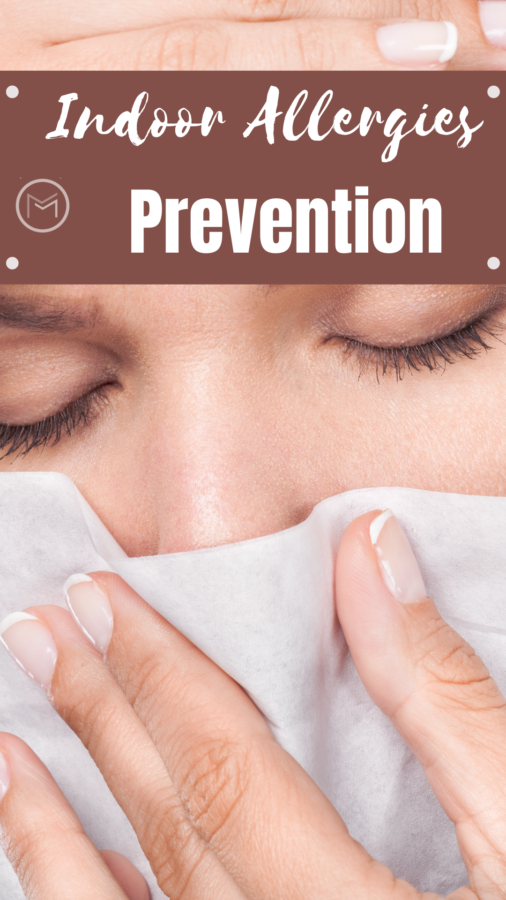Today, I’m sharing parenting tips on indoor allergies prevention for homes. Allergens in the home often bring nothing but heartache. If someone in the home has allergies or asthma, that’s enough reason to keep them out. However, even those with no diagnosed issues can experience respiratory problems due to poor air quality. For that reason, we’re going to look at how you can prevent indoor allergens from dominating the air and putting your family at risk of falling ill.

Indoor Allergies Prevention for Homes
Dust to prevent allergens
To some people, dusting on a regular basis when the home is otherwise clean might seem like overkill. However, dust and mold particles in the home are some of the most common causes of allergic reactions. As a result, dusting should be taken seriously. The best way to clean dust is to make sure that you’re not just moving it around. So, ensure you are not trapping but removing it by using microfiber cloths, are becoming popular.
Keep it cool and dry
When it’s hot and humid, you’re going to get a lot more allergens. Being hot and humid is the perfect opportunity for proliferating mold, as well as dust mites. The optimal temperature that you should aim for inside the house is 70 F. As for humidity, you may want to look into purchasing a dehumidifier for the home, which effectively removes the moisture from the air to better manage it.

Don’t let outside allergens inside
If your home has air leaks, not only is it going to be poorly insulated, it’s also going to let more allergens into the home. This includes pollen, the most common cause of allergic reactions, and a prime instigator of respiratory issues. New wood window installations can help you close up the gaps where weather stripping may not be enough. Furthermore, check your doors for air leaks that could be letting all those allergens in too.
Green cleaning products help prevent indoor allergies
Allergens aren’t just found in dust, dirt, and the outside world. Sometimes we can introduce them to our own home. We are finding that common household cleaners contain irritants that can trigger asthma, allergies, and exacerbate other respiratory conditions. For that reason, make sure that you’re using green cleaning products. Green cleaning products are typically identifiable by the fact they use mostly plant-based and natural chemicals. You can also make DIY cleaning spray with vinegar, baking soda, and lemon.
Service your HVAC
Ventilation and air conditioning are two of the most commonly used appliances for maintaining air quality and temperature in the home. While they’re good at their job, dust, mold, and other allergens can gather in the filters. As a result, make sure that you’re cleaning them regularly and replacing HEPA filters to ensure they are working for you rather than working against you.
The better you protect your home from outside allergens and remove the allergens that get inside, the better your chances of keeping your family healthy and happy. The above tips will help get started to a healthy home environment.







